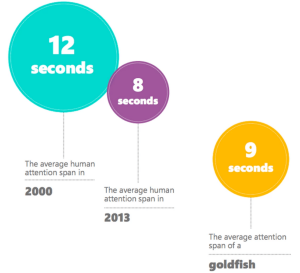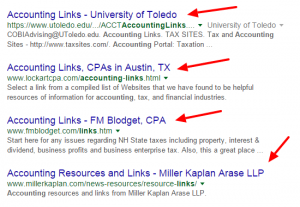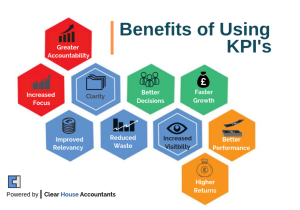— July 26, 2017

Tumisu / Pixabay
In the modern workplace, performance reviews and employee evaluations are a necessary evil. As a manager, you probably don’t like giving them and it’s no surprise that only 55% of respondents in a recent study stated that these performance processes had a positive impact on the organizations. So, what can you do?
Feedback and reviews are essential to development and growth within a company. Without them, you wouldn’t know if the job you were doing was good or not, and as a result, the company would suffer immensely. Finding the right techniques to implement to ensure that your team gets the insights they need is no easy task.
Below are 15, that’s right, count ’em, 15 performance evaluation ideas that are sure to enhance your processes like never before. Not to mention, as time goes on, we’ll continue to add to list in order to give you the best advice possible when it comes to providing that much-needed feedback. Take a look!
1. Make (Face) Time
Whether twice a year or twice a month, make time to meet with each employee for about 15 minutes, to discuss where they fall for each of their personal performance measures. Include any issues, concerns, and expectations in order to continue growth in the defined areas. Email and software are great but sometimes they need to see your face.
2. Make It Personal
Allow employees to develop goals and objectives to improve their performance evaluation. Create a personal connection by allowing them to see and realize where they need to improve, how they can improve and make goals to meet those new expectations. Show a realistic timeline to help them achieve the goals they’ve set. For example, ask employees what they specifically want to accomplish and how they hope to get there. It may be helpful to have them create a plan and share it with you to ensure you both understand how these goals will be handled and what is to be expected as time goes on.
3. Think Tech
It’s time to use tech to your advantage outside of the normal daily uses. There are multiple tools out there; like iRevü, WorkFlowy, and Gliffy, that help organize and keep track of goals, performance, provide feedback, and even help schedule evaluations in general. Implementing these tactics helps with collaboration and improved communication. This allows you to work together with employees and construct realistic goals and ideas, meaning the feedback you provide is more helpful and insightful.
4. Increase Frequency
We know that weekly evaluations aren’t for everyone. But, it’s a good idea to think about slowly increasing how often you give feedback or have evaluations. Find an amount that works best for your company and use face to face talks, group meetings, email and your performance review system to ensure you are giving feedback regularly.
5. Be Negative, Erm Corrective
When it comes to your employees, don’t be afraid to tell them how it is. If they do something wrong, it’s in both of your best interests to let them know. How can they get better if they don’t know the right way to do it? Corrective feedback is better than no performance feedback at all!
6. But, Be A Little Positive Too
Just because you are giving negative feedback, doesn’t mean you have to ONLY give negative feedback. Positive feedback helps balance out the negative and focus on a plan moving forward together.
7. Watch What You Say
As with any communication, saying the wrong thing or coming off having a certain attitude is bound to disengage and cause complications in the future. Phrases like, “It’s great, but…” or “I think we should do this instead” can kill employee morale, weaken productivity or worse.
8. Focus On The Performance
One of the main issues when it comes to performance evaluation is not focusing on the performance itself. Possibly without even knowing it, many are bias in the fact that they are evaluated on attitude and other aspects that may not actually influence their overall performance. Don’t pay too close attention to HOW they accomplish their work, instead base performance off of major milestones and the end result. For example, you may not like that your designer sits in a corner and listens to music all day, but they are producing logos that clients are very happy with and that is what’s important to your business. Keep this in mind and remember to focus on the goals and performance at hand.
9. See What They Have To Say
While you’re giving your own feedback, it helps to be collecting it from employees as well. What do they have to say about your overall performance and how they are able to do their job? This will help ensure that you are on the right track!
10. Ask About Their Peers
Peer to peer feedback and evaluation can be very helpful in getting truthful insight on how employees work. However, when you have a large team, it can be tedious to gather all this information. Instead, during the review, ask them who they may have noticed is having an influence on the workplace and providing proficient work. Allow them to elaborate to gain insight and examples you can mention later on.
11. Create A Dialog
Most importantly, evaluations shouldn’t be just you talking about what they are doing right and wrong; it needs to be a conversation. Go back and forth with ideas, opinions, and objectives that you think need the most attention. Make sure that both you and your employees are on the same page.
12. Be A Coach And Leader
Talking things through is ensures you are not just forcing them to drink from a firehose. Give them ways they can improve and succeed in the future. Are they having problems in a certain area? See what advice you can give them to get over that obstacle.
13. Keep Notes
Keeping track of everyone on your team is no easy task, and we don’t expect you to remember everything. So, that’s where keeping notes really come in handy. This should be done not only during the evaluation, but in between them as well (aka, all the time). Have a document handy where you can jot down thoughts, concerns, performance goals, and specific events about your employees. This will be beneficial to look back at and evaluate them fairly.
14. Be Specific
What’s the best way to show someone how they can improve? Provide examples! Don’t say, “Sue is great at her job.” Select a specific example of where Sue excelled. And, instead of just saying they need to get better at writing web copy, explain what they left out and discuss a certain task they recently did so they can reference it in the future.
15. Focus On Progress
Realize that some goals take longer than others. Depending on the circumstance and how frequent your evaluations occur, not all employees will have accomplished all the goals they set out to do. So, focus on their progress moving forward. What are they doing every day to work toward that accomplishment? Allow them to track that progress by creating a planned timeline, sending through weekly/monthly email updates, or by making a simple checklist they keep with them.
Navigating the world of evaluations isn’t always easy, but implementing the right ideas and processes can change it for the better.
Business & Finance Articles on Business 2 Community
(101)
Report Post







